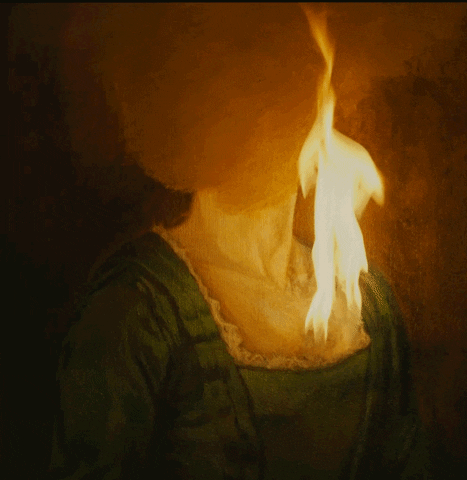Lost Histories
Some thoughts fresh upon finishing Céline Sciamma's Portrait of a Lady on Fire

“Being free is being alone?” asks Adèle Haenel’s character, Héloïse to Noémie Merlant’s character, Marianne. A terrifying truth for the character of Marianne to confront as she falls in love with her muse, Héloïse whose mother had hired Marianne to paint through the course of the movie. An eventual romance that inevitably turns tragic against the backdrop of eighteenth-century France as Marianne leaves after the painting is done knowing full well that Héloïse was arranged to be married off to her late sister’s suitor, a Milanese aristocrat.
Before you, my dear reader, scorn at the fact that I have divulged some spoilers and irreversibly ruined the movie for you, I must tell you that you’re disappointment in me would be misplaced for this is a bare-bones incomplete skeleton of an outline of the plot of the movie that I have chosen to share with you. My choice to impart this selected piece of information regarding the film’s plot would do nothing for you as a potential viewer to reduce your experience of watching this because what director and writer Céline Sciamma has made through her subtle direction of long shots, colour, costumes, production and also two amazing powerhouse performances by Adèle Haenel and Noémie Merlant is capture a soft yet highly intense showcase of lesbian romance and femininity that requires all the attention it truly deserves.
The movie takes place on what seems like to be an island inhabited solely by woman reminiscent of an eighteenth century French Themyscira (a mystical solitary island inhabited by Amazonian warrior women as popularised by the Wonder Woman comics) where a society of women seems to exist sans a man’s presence peacefully held together by songs being sung at bonfires and Greek tragedies being read to each other at candle light. A setting which effortlessly breathes life and substance into a movie whose over-arching themes amongst many is undoubtedly feminism. Through comfort and support amongst the women portrayed it shows an almost utopian society whose only aim is to ensure the comfort of those who reside in it and the painting of a portrait of a one rather stubborn countess’ daughter.
A story of an artist’s romance which intersects with their art is always one that deems drama and tragedy usually playing out with the art and the artist’s ambitions coinciding like they had dreamed off or for the romance to truly blossom leaving the art behind, perhaps not entirely but in the background no less. Portrait of a Lady on Fire is perhaps a movie of the former make but done so without the latter aspect losing its significance and the acknowledgment of their love by the end of the movie. Marks of cinematic prowess by a masterful storyteller.
As the credits rolled, I couldn’t help but be made aware to larger truth that I felt that Sciamma was trying to disclose with this movie. I wondered about the countless loves, queer and another wise that were made lost to serve the sustaining of the hierarchical coldness of arranged marriages that society has thrived upon. Class struggles defined by countless women made to closet their passions, identities and independence for the sake of societal conformity at the promise of a “better” life, echoed by Héloïse’s mother who wants what any mother wants for her daughter in a patriarchal society.
An abortion is seen in the movie and I apologies if you, my dear reader feels that this is a spoiler. I refrain from divulging the identity of the character who has said abortion to even things out. The politics of abortion are still a divisive argument now even if the science is not and perhaps the discussion of such would be better for a future edition of this newsletter if I feel like writing about it but in the movie its serves as a reminder of man’s existence in this world which could be forgotten when engrossed in this world solely made of women. Towards the end of the movie as men start to appear in the frame, I couldn’t help but feel a dissolution of security for this world of women that Sciamma had created and that everything would have been alright if they hadn’t show up. The forbidden romance between Héloïse and Marianne would not be forbidden nor would it have been broken. They would be able to live their lives knowing that they would each wake up in each other’s embrace every morning, spending their days painting, walking by the beach and reading Greek tragedies to each other in the night. The fact that they would truly be free without having to be alone but couldn’t be so because of the world beyond the beaches they walk past by is the tragedy that I feel Sciamma portrays through the Portrait of a Lady on Fire.
A fact that has cost this world and time we currently live in uncountable rich stories of love, life and everything else. Complex and intricates histories lost because we chose to accept one so simple and linear. No greater tragedy.

